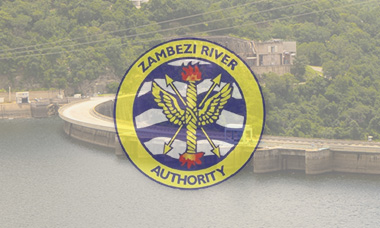
Lusaka, 1st June, 2020 – The Zambezi River Authority, being a Bi-National Organisation jointly and equally owned by the Governments of the Republics of Zambia and Zimbabwe, has a mandate to manage the Kariba Dam and develop additional water storage infrastructure along the shared portion of the Zambezi River located between the two States. The Authority hereby wishes to provide a further update on the water level at Kariba as a follow up to the update of 27th March 2020.
The Authority has continued to record daily river flow data from its 14 gauging stations located within the Kariba catchment to informs reservoir operations at Kariba. Among the key gauging stations are those located at Chavuma and Victoria Falls in the North Western and Southern Provinces of Zambia, which are the principle lake inflow monitoring stations for Lake Kariba. The recorded flows at the two stations from the start of January to 27th May 2020 are summarised below.
Zambezi River Flows as Monitored at Chavuma Gauging Station
During the last update, the Authority informed the public that the Zambezi River flows had risen from 236 cubic meters per second (m3/s) recorded at the start of January 2020 to a peak of 5,006 m3/s recorded on 25th February 2020 after which the flows receded. This recession in river flows continued up to 17th March 2020 when the levels started rising again from the recorded dip of 2,838 m3/s of 17th March 2020.
This second increase in flows, which is characteristic of Chavuma gauging station, continued up to 6th April 2020 when the river flows reached a second peak of 5,825 m3/s before gradually receding to the 776 m3/s flow recorded on 27th May 2020. The flow recorded on the same date last year (27th May 2019) was 239 m3/s. The recorded flow at Chavuma on 27th May 2020 was therefore 225% higher when compared with the flow recorded on the same date last year. Further, the river flow at Chavuma continued to trend above the long-term average flow for Chavuma gauging station of 482 m3/s by 61%.
The Zambezi River flows at Chavuma are now in recession as expected during this time of the year with the 2019/2020 rainfall season having now ended.
Zambezi River Flows as Monitored at Victoria Falls Gauging Station
The Zambezi River flows recorded at Victoria Falls rose from 349 m3/s at the start of January 2020 to a peak of 4,289 cubic meters per second (m3/s) recorded on 3rd May 2020. The last time such high flows were attained at Victoria falls was a decade (during the 2009/10 rainfall season). The second upswing in flows at Victoria Falls started mid-April 2020, mimicking the double peak at Chavuma 4 weeks later, this being the normal travel time of flood waters between Chavuma and Victoria Falls. Following the peak in flows at Victoria falls of just over 4300 m3/s, the flows at Victoria falls are now equally in recession with recorded flow of 3,355m3/s on 27th May 2020. Last year on the same date, the recorded flow at Victoria falls was 1,117 m3/s. Therefore, this year’s flow recorded on 27th May 2020 at Victoria falls represents an increase of 200% when compared to last years flow on the same date. Further, the recorded flow on 27th May 2020 is 57% higher than the long-term average river flow for Victoria falls.
Recorded Lake Levels at Kariba
The lake level receded for the most part of the first quarter of 2020 with the obtaining lake levels being the lowest on record (with the only exception to this low lake level being the lake levels recorded during the 1995/996 drought period). The receding lake levels were mainly caused by the delayed onset of the 2019/2020 rainfall season which only commenced in January 2020 instead of October 2019 as projected by both local and regional weather experts and meteorological authority’s, coupled by poor rainfall run-off which saw a delayed increase in the Zambezi River flows in the Kariba catchment. However, the lake level later rose by 3.13 meters (m) between 27th March 2020 and 27th May 2020 following increased rainfall activity and associated run-off especially in the upper Kariba catchment. However, the lake levels should have been by then no less than 8m above the Minimum Operating Level (MOL) but was only just over 5 meters above the MOL by 27th May 2020.
As of 27th May 2020, the recorded lake level was 480.77m, signifying 37.6% live storage or 24.40 Billion Cubic Meters (BCM) of stored usable water, with the lake being 5.27m above the Minimum Operating Level (MOL) of 475.50m.
Water Utilization for Power Generation at Kariba
During the period 1st January,2020 to 27th May 2020, a total of 11.45 Billion Cubic Meters was utilized for power generation, representing 34% of the gross inflows over the same period. Balancing between the increase in lake inflows with the need to ensure a steady buildup of the reservoir storage for purposes of power generation, and the uncertainty regards the rainfall performance under the upcoming 2020/2021 rainfall season , Zambezi River Authority has predominantly maintained the water allocation made to the two power utilities at Kariba for the year 2020 (23 BCM of water shared equally between Zesco Limited and Zimbabwe Power Company) to ensure continued availability of water for power generation at Kariba for the remaining months of the year 2020 and beyond.
The Authority will continue to monitor the hydrological situation in the Kariba Catchment and water levels at Kariba Dam and keep the public accordingly informed.
ENGINEER MUNYARADZI C. MUNODAWAFA
CHIEF EXECUTIVE
- Ends// -
Contact:
Elizabeth M. Karonga
Public Relations and Communications Manager
Lusaka, Zambia I Cell: +260 97 7318735 I Email: pr@zambezira.org
www.zambezira.org

